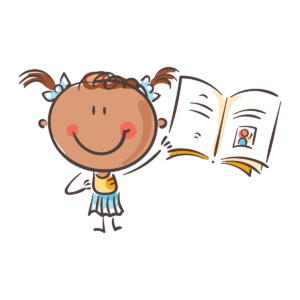Libraries for Families by the Global Family Research Project
 Libraries are a source of connection for communities across the country. Director of Research and Professional Learning at the Global Family Research Project, Dr. Margaret Caspe, recounts the origin of the Ideabook.
Libraries are a source of connection for communities across the country. Director of Research and Professional Learning at the Global Family Research Project, Dr. Margaret Caspe, recounts the origin of the Ideabook.
In 2015, GFRP dove into research of the out of school space, including the review of libraries as a free, trusted anchor institution in nearly every community. GFRP partnered with the Public Library Association that year who had just discovered their success in bringing families into libraries to promote early literacy with Every Child Ready to Read, an evidence based literacy program.
Families were going to libraries to promote literacy with their children, however, as they were in the space they were getting connected to other resources and other families.
Libraries saw this at a time of digital revolution and began to reimagine their family engagement work.
GFRP and PLA began crafting a vision for family engagement, not just in the early childhood years, or just around literacy, but for intergenerational learning and family engagement from K through12.
GFRP completed a large scale survey of over 400 directors of libraries throughout the country to really understand what they thought about family engagement. A learning community of over 20 librarians convened monthly to discuss challenges, barriers and successes of family engagement efforts.
“We had librarians from Alaska to Alabama thinking about rural, urban, suburban spaces and everything in between,” says Caspe. “And we took all of those learnings and decided that the best type of resource for librarians in the field would be something of an ideabook, where people could get inspired by all the different examples and illustrations of things going on, with a framework around it.”
The framework
From the surveys and 60 individual interviews, it was clear to see family engagement as a system that required a vision from leaders and their commitment to funding for the provision of professional learning and appropriate staffing on the ground. This informed The Five R’s Framework.
“The framework helps raise up family voice, especially for families historically underserved by libraries,” says Caspe. “It reimagines the types of partnerships that libraries have in the community and reinforces, through co-creation, the values and strengths families bring to children’s learning.”
The final part of the system is understanding support services. These include the kind of collections, physical plants, outside of brick and mortar libraries, and digital resources that exist for reaching families in the community.
 “Librarians really felt that they were doing a great job around early literacy and family engagement, that was loud and clear from the data collection,” Caspe says. “ But it was the K-12 that was a little bit more difficult.”
“Librarians really felt that they were doing a great job around early literacy and family engagement, that was loud and clear from the data collection,” Caspe says. “ But it was the K-12 that was a little bit more difficult.”
In that space, libraries were having success with staff. Makerspace and STEM infused tinkering programs at day events, family workshops and in the types of materials that librarians have made available was also an area of strength.
“We saw libraries building capacity in an area that society was also shifting toward,” Caspe says. “So that thread of STEM runs through the Ideabook and the larger framework of understanding leadership engagement and support services.”
GFRP set out to understand where libraries were getting the funding to support the STEM work. Through interviews with library leaders in California, Massachusetts, Texas and beyond, GFRP created a brief to explore what libraries are doing to support and fund STEM initiatives, with an emphasis on equity and building family relationships, from state to state. Read the brief here.
Feedback on the Ideabook
In collaboration with the PLA and American Library Association, a messaging tool kit was created for libraries and librarians to advocate for family engagement.
Three main ideas emerged from libraries use of the Ideabook and its benefits:
- The framework is really important. In thinking about family engagement, the system is not typically seen immediately. Providing a framework, gave leaders something to leverage to gain support for staff, materials and outreach efforts. It validated the system and capacity building that must be in place to successfully engage families.
- The Ideabook needed to be an active, living resource. This feedback generated the living resource on the Medium platform that allows librarians and others to contribute new ideas overtime. Access the living Ideabook here.
- Research from the field at large has been the foundation of the Ideadbook. Research and practice has validated the work of libraries around the country and the ideas and examples of the resource.
Stories from Toronto
 The Toronto Public Library system saw the Ideabook and was inspired to revise a similar project they hoped to bring through fruition.
The Toronto Public Library system saw the Ideabook and was inspired to revise a similar project they hoped to bring through fruition.
“GFRP did a day-long workshop and training for over 60 librarians from around Toronto,” says Caspe. “We worked with this notion to start where libraries were strong and build on those existing efforts. During the day, libraries were able to concretely what other people are doing and find ideas that they could implement right away.”
Global Family Research Project
The Global Family Research Project seeks to connect research policy and practice to promote innovative strategies and family engagement in all of the spaces where children learn. This includes: schools, early childhood programs, after school programs and libraries.
GFRP works across boundaries—with early childhood and afterschool organizations, schools, digital media, libraries, museums, and others working on behalf of children and families—to ensure that families are empowered in children’s learning, from early childhood to young adulthood.
GFRP encourages global connections by lifting up and sharing innovative family and community engagement strategies, research, and practices. We have shared our expertise with educators and philanthropies in Brazil, Chile, China, and Australia.
Highlights of GFRP’s work includes:
- Groundbreaking work on the use of the case method to engage families in an ecology of learning,
- Leadership in the U.S. Department of Education’s National Parental Information and Resource Center’s Technical Assistance Center
- Preparation of a seminal report on the first Head Start Parent, Family, and Community Engagement Framework
- Contributions to new approaches to evaluate philanthropic, policy, and program initiatives.
- Creation of the first database of afterschool evaluations
- Development of a challenge paper to shift mindsets and practice in family engagement

